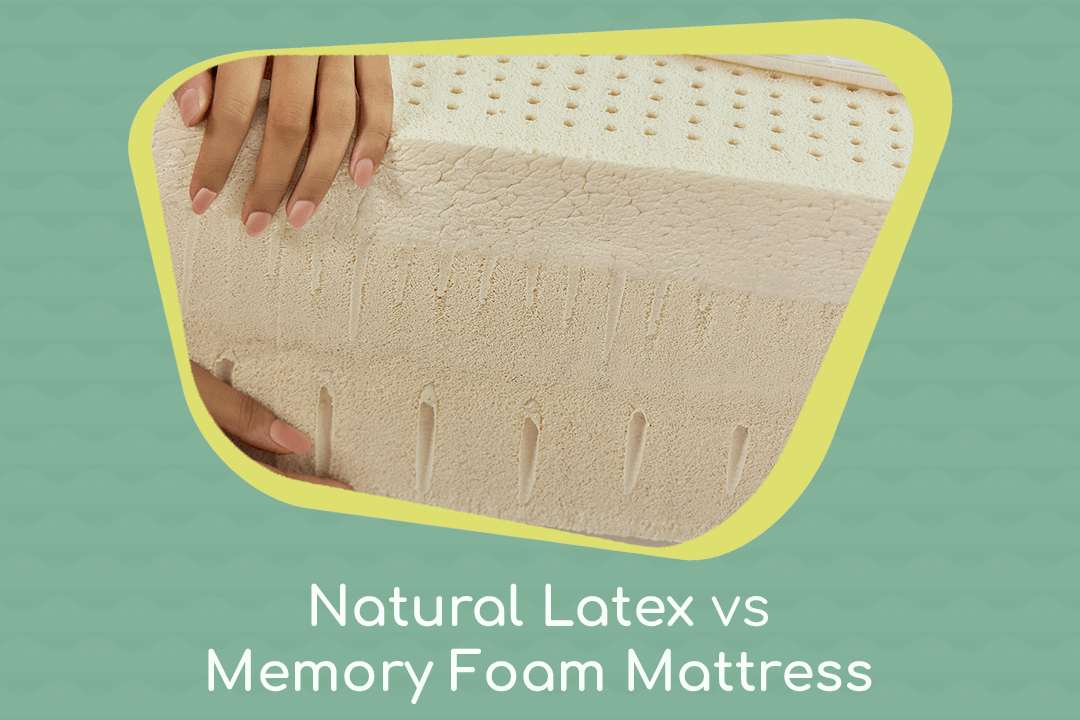With the different types of mattresses available, choosing the best can become a challenge, especially if you are unsure about what to look for. The right mattress will not only provide you with greater comfort, but will also keep aches and pain away. Thus, let’s check the difference between natural latex and memory foam – two of the most popular mattresses.
A] What is Memory Foam?
Memory foam is manufactured by increasing the viscosity and density of polyurethane and treating it with chemicals. Memory foam, unlike regular polyfoam, responds to body heat by becoming softer and more accommodating. When you lie down on memory foam, the material reacts to your body heat and gradually conforms to your shape.
The body-hugging sensation of memory foam is one of its top benefits. It’s a reasonably priced material, so you’ll find it in a variety of mattresses. However, trapping body heat is one of the most significant disadvantages of memory foam. Thus, individuals who feel hot should reconsider purchasing a memory foam mattress.
B] What is Natural Latex Foam?
While synthetic latex is created from petroleum, natural latex is derived from the sap of the rubber tree. The sap is harvested and processed into a viscous foam-like substance. To create natural latex foam, one of the two methods – Talalay or Dunlop – is used.
Read: Reasons to Buy Natural Mattresses
C] Difference Between Latex and Memory Foam Mattresses
- Feel: Memory foam gives a comforting, deep sensation. When you initially lay down, it progressively conforms to the contour of your body and slowly returns to its original form when you move. The feel of a natural latex mattress is much more bouncy and responsive. It still conforms to the shape of your body, although it does so less than memory foam.
- Support: Both mattress designs are known for their high levels of support, effectively supporting the body, keeping the spine aligned, and improving the sleeper’s comfort. But, latex often trumps memory foam in the long run due to its high durability and reactivity. While memory foam gradually loses its shape and support, latex preserves its shape and stays very supportive throughout the mattress’s lifespan.
- Temperature Neutrality: Latex is better at maintaining a neutral temperature than memory foam, which absorbs and traps body heat. To help with temperature regulation, several manufacturers add extra features or components to their memory foam, including cooling gel, open-cell foam, and others.
- Price: Latex mattress is typically more durable than memory foam. Plus, the long-term cost differential is less significant.
- Durability & Warranty: A latex mattress is likely to last roughly 7.5-8.5 years on average compared to 6-7 years for a memory foam mattress. In addition, compared to memory foam, latex mattress offers longer warranties.
Read More: Importance of Organic Mattresses: An Overview and Benefits
Final Thought
- Do you sleep on your back or side regularly or are concerned about maintaining spinal alignment and avoiding joint stiffness?
- Are you concerned about the environment and wish to choose a naturally made mattress?
- Do you struggle to strike the right balance between a restful night’s sleep, comfort, and support?
If you answered yes to any of these questions, then a certified natural latex mattress is precisely what you need. At aloha, we strive to provide the best natural latex mattress, made of organic materials and free from harmful chemicals or pesticides.
